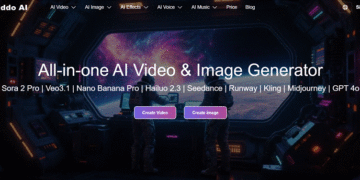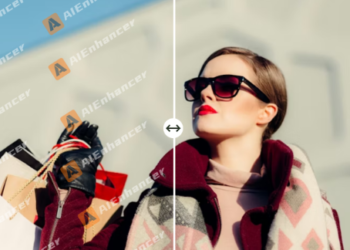In the fast-moving world of digital media, a user is exposed to tons of advertisements, and therefore, creating an ad that will grab eyeballs and bring out significant revenues is both an art and science—but mostly science. What separates the big revenue-generating ads from the rest? If you’re wondering how to make money advertising, let’s put on our detective hats and find out what factors make ads extremely profitable.
Chapter 1: The Power of a Unique Selling Proposition (USP)
The USP offers a product or service in comparison to its rival counterparts. It is the definitive consumer view of your product concerning its competitors. Advertisements simply must convey this distinct reason. Apple has used this concept to trigger its USP, which, in turn, helped them succeed with advertising.
A great USP should:
- Communicate the unique benefit of a product.
- Be easy to understand and remember.
- Address a specific need or problem of the target audience.
- Be incorporated into all marketing and branding efforts.
Chapter 2: Establishing an Emotional Connection
An advertisement is effective when it gets to the person emotionally because most commercially successful advertisements take on this approach. Ads reverberating emotion are remembered better and can yield higher consumer loyalty in the long run. Stirring up feelings like happiness, nostalgia, or fear sets the groundwork for making that ad memorable long after the initial viewing. Take, for example, the holiday campaigns that Coca-Cola runs. They are lighthearted and inclusive campaigns, making a stronger connection to their brand and happy occasions. Whether with music, stories, or imagery, an emotional ad can, therefore, carry with it far higher rates of engagement and conversion.
Chapter 3: Crafting a Clear and Compelling Call-to-Action (CTA)
A well-defined CTA guides consumers on the next steps, whether making a purchase, signing up for a newsletter, or exploring more about a product. Clarity and urgency in CTAs can significantly boost conversion rates. Phrases like “Shop Now,” “Learn More,” or “Limited Offer” prompt immediate responses from potential customers.
To create a compelling CTA:
- Use action-oriented words that encourage quick decisions.
- Keep it concise and easy to understand.
- Highlight the benefit of taking action (e.g., “Save 20% Today”).
- Use contrasting colors and design elements to make it stand out.
Chapter 4: Visual Appeal and Creativity
In an age where visual content reigns supreme, the leading player in the advertising effectiveness department is how aesthetically pleasing it is. Innovated design and high-quality imagery, with creative and strong concepts, can captivate the audience and differentiate one ad from another when in competition. For one, Nike’s ads, though minimalist, are striking with strong visuals and concise messaging—all aiding in solidifying their brand identity. The choice of colors, the typography used, and the layout applied matter. Using visuals that grab the eye and are likewise the vehicle of branding messages ensures a seamless and memorable experience for the receiver. The ads would, therefore, need to come from another mind—the unexpected, the humorous, the emotionally charged ad typically has the best performance.
Chapter 5: Targeting and Personalization
Data analytics allows advertising targets to be adjusted according to specific demographic features, interests, and behavior factors. Advertisements that speak to personal choice go a long way to engaging the consumer and getting conversions for any ad by consumers. For example, a content promotion recommendation algorithm sends highly personalized content for promotion on Netflix. Such measures strengthen user participation while increasing retention by building a sense of being valued by viewers.
Chapter 6: Leveraging Advanced AdTech Solutions
In the evolving world of digital advertising, utilizing advanced AdTech solutions can significantly enhance campaign profitability. Companies like Attekmi, formerly known as SmartHub, specialize in providing various ad exchange solutions tailored to different business needs.
Their offerings include:
- AdEx Basic: A pre-built ad exchange platform designed for swift entry into the programmatic market, enabling businesses to start earning from media trading promptly.
- AdEx Plus: An advanced version offering scalability and customization opportunities, catering to businesses aiming for growth and enhanced media trading capabilities.
- White Label AdEx: A fully customizable solution that meets specific client requirements, allowing for complete branding and feature personalization.
By integrating such sophisticated AdTech solutions, businesses can streamline their advertising operations, achieve better targeting, and ultimately drive higher profitability.
Chapter 7: Consistency Across Channels
A uniform brand message on all advertisement channels would help reinforce brand identity and trust. Whether on social media, TV, print, or online platforms, a concise message will bring core information closer to the consumer for better recall and recognition. Brands like Starbucks have successfully implemented their multichannel consistencies by maintaining their signature green branding, warm and customer-centric messages, and high-quality imagery on all platforms.
Chapter 8: Testing and Optimization
Continuous testing and optimization are vital for advertising monetization success. A/B testing different ad creatives, headlines, and CTAs can provide insights into what resonates best with the target audience. Analyzing performance metrics allows advertisers to refine their strategies, allocate budgets effectively, and maximize return on investment.
Some key metrics to monitor include:
- Click-through rates (CTR)
- Conversion rates
- Cost per acquisition (CPA)
- Engagement levels on social media
Chapter 9: Storytelling and Narrative
Intrinsic to human nature is the love of stories, and because of this, advertising that tells a story is likely to capture a much more interested audience than a direct sales advertisement. Some brand companies, like Airbnb, excel in this art of storytelling through the induction of real customer experiences in their stories, thereby making the service feel more personal and authentic.
Storytelling in advertising can be:
- Problem-Solution based (e.g., “See how this product solved a real problem for someone like you.”)
- Aspirational (e.g., “Imagine your life with this incredible experience.”)
- Relatable and human-focused (e.g., “Meet Sarah, who found her dream vacation thanks to us.”)
Chapter 10: Social Proof and Testimonials
Testimonials, reviews, and user-generated content in advertisements increase credibility while reducing consumers’ ‘intuitiveness’ of most purchasing decisions. Numbers: It’s proven that others’ experiences sway people, so there’s no way a potential consumer can stay indifferent when celebrity photos and life stories are published in ad campaigns. “Real” endorsements get featured in real-life success story advertisements, where such endorsements usually shake up a potential buyer’s indifference.
For example, massive space on Amazon is probably taken by customer reviews and ratings, where prospective buyers peep into the honest feedback before picking up a purchase line. Social proof, as marketing atmosphere jargon, serves to allay those hesitations for many consumers and also shores up brand credibility.
Conclusion
Profitable advertising results from the strategic process between a profit plan and creativity mixed with adaptability. To develop just that, brands need to incorporate elements like USP, emotionally engaging content, call-to-actions, Attekmi AdTech solutions, and approving ads, which will capture the consumer’s attention and drive substantial revenue. Continued success in the advertising industry will rely on consumer preference and the technological wave. Therefore, targeting the asset that acquires customer attention remains the core of a profitable advertising campaign.












































































